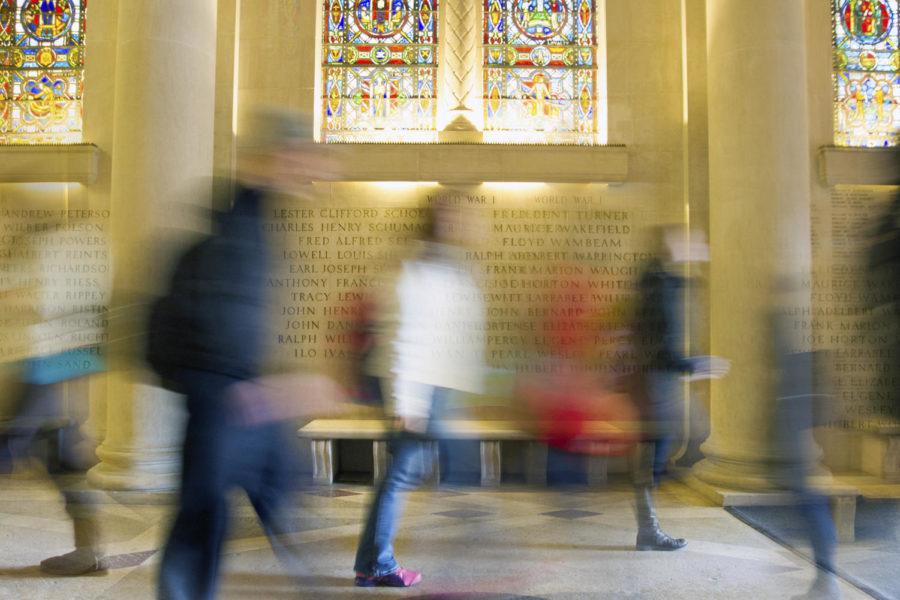Gold Star Hall stained glass windows tell the story of Iowa State
February 22, 2013
Every year, a million people pass by the 12 stained glass windows in Gold Star Hall at the Memorial Union.
Some look up and glance at the colorful, light-infused art; others look straight ahead, not noticing the history that lies above them.
Originally in 1927, while the Memorial Union was being built, it was envisioned that there would be stained glass windows in Gold Star Hall, but clear glass windows were installed instead.
It was not until 1942 after a fundraising movement led by ISU students that alumnus Harold Cummings, a World War I veteran, was commissioned as the designer for the project.
The stained glass windows were installed in 1943.
Each window depicts a symbol of the “homely virtues”: learning, virility, courage, patriotism, justice, faith, determination, love, obedience, loyalty, integrity and tolerance.
They also contain symbols for Iowa State’s academic majors, branches of the U.S. military, ISU traditions, and symbols representing Christianity and Judaism.
Kathy Svec, former marketing coordinator at the Memorial Union, calls the windows “a visual guideline for what it means to be a true [ISU] student.”
Key chapters in Iowa State’s development and the heroic deeds performed by ISU students are depicted in a rectangle at the bottom of each window.
“They are a feast of stories, specific stories about Iowa State’s history,” Svec said.
Under the “integrity” window, the story of Hortense Elizabeth Wind, the only woman out of approximately 600 former ISU students to have their name engraved in Gold Star Hall, is painted.
The panel shows a battlefield nurse, which is meant to represent Wind, serving in Europe during World War I, but Svec said it has been recently learned that Wind was actually a dietitian who died during the flu epidemic of 1918 in Virginia.
The “love” window shows the scene of the football game between Iowa State and Northwestern in 1895 where Iowa State earned the title “Cyclones” after a Chicago sports writer stated that Northwestern had been defeated by a “cyclone from out of the West.”
Nods to Iowa State’s culture can be seen throughout the windows.
Scenes of the Campanile and cherries are present along with an image of Adonijah Welch, the first president of Iowa State.
Welch can be seen with a sack of potatoes, throwing them; according to an ISU legend, wherever one of Welch’s potatoes landed is where a tree was planted on campus.
“We have to make it part of the Iowa State experience,” said Scott Southward, communications specialist at the Memorial Union. “I think we have to look at it strategically to get the message out to students.”
The history of the Campanile, the Zodiac and VEISHEA has been ingrained in every student’s brain, but not the story of the Gold Star Hall’s stained glass windows.
The windows are a lesser-known tradition, which can be seen as the 12 pillars of what it takes to be a true Iowa Stater.
“The first impression is that they are very churchy, but each is a symbol for something,” Svec said. “They are the story of Iowa State, and this is why they are very important for students to know.”







